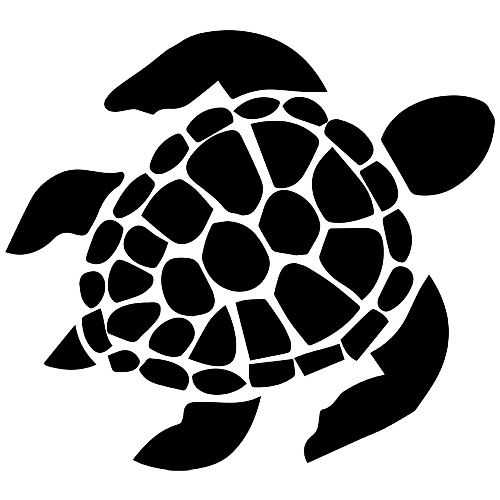History of... Sea Turtles
Name:
Sea Turtle
Scientific Name:
Chelonioidea
Family:
Cryptodira
Conservation Status:
Endangered
Habitation:
The ocean
Global Location:
Most of the world's oceans, apart from cold polar seas.
Discovery:
Fossils of sea turtles have shown they were alive around 150 million years ago during the Late Jurassic Period, but when and what they evolved from is still debated
Sea turtles are air-breathing reptiles that have lungs, regularly surfacing to breathe. Sea turtles spend a majority of their time underwater, foraging they spend 5 to 40 minutes underwater, while a sleeping they can remain underwater for 4 to 7 hours.
There are seven existing species of sea turtles: flatback, green, hawksbill, leatherback, loggerhead, Kemp's Ridley, and olive Ridley. All of the turtles have hard shells apart from the leatherback which has a leathery composition. Both of the males and females of each species are the same size.
Unlike land tortoises and freshwater turtles, sea turtle shells are shaped for swimming in the oceans and cannot draw their heads and legs into their shells for protection.
The leatherback sea turtle is the largest sea turtle, measuring 2–3metres (6–9 ft) long, 1–1.5metres (3–5 ft) wide, and weighing up to 700 kg (1500 lb). Other are around 60–120 cm (2–4 ft) long and proportionally narrower.
Their diet can include algae, seagrass, seaweed, crabs, conchs, whelks, sponges, shrimp, lobster, urchins, jellyfish, fish and coral.
Sea turtles are generally found in the waters over continental shelves. During the first three to five years of life they spend most of their time in the pelagic zone (in the open ocean) floating in seaweed mats. Green sea turtles in particular are often found in sargassum mats (large clumps of floating algae), in which they find food, shelter and water. Once they reach adulthood they move into the demersal zone (ocean near to shore).
Sea turtles are thought to reach maturity at around 10 to 20 years old and migrate to reach their spawning beaches, which are limited in numbers. They mate in the oceans just offshore from the nesting sites.
The female hauls herself onto the beach, nearly always at night, and using her hind flippers, she digs a circular hole 40 to 50cm (16 to 20 in) deep. Then starts filling the nest with her clutch of soft-shelled eggs. Depending on the species, a typical clutch may contain 50 to 50 eggs. After laying, she re-fills the nest with sand, then camouflaging with vegetation. She may also dig decoy nests. The whole process takes 30 to 60 minutes. She then returns to the ocean.
Females may dig and fill 1 to 8 nests in one season. They alternate between mating in the water and laying their eggs on land.
Sea turtles eggs incubate for 60 to 80 days and hatch. Newly hatched turtles emerge and travel to the water. Nests that hatch during the day are more vulnerable to predators, and may encounter more human activity on the beach.
Like other marine reptiles, sea turtles rely on a specialized gland to rid the body of excess salt, because reptilian kidneys cannot produce urine with a higher ion concentration than sea water. All species of sea turtles have a lachrymal gland in the orbital cavity, capable of producing tears with a higher salt concentration than sea water. Which is why it looks like turtles cry. 


